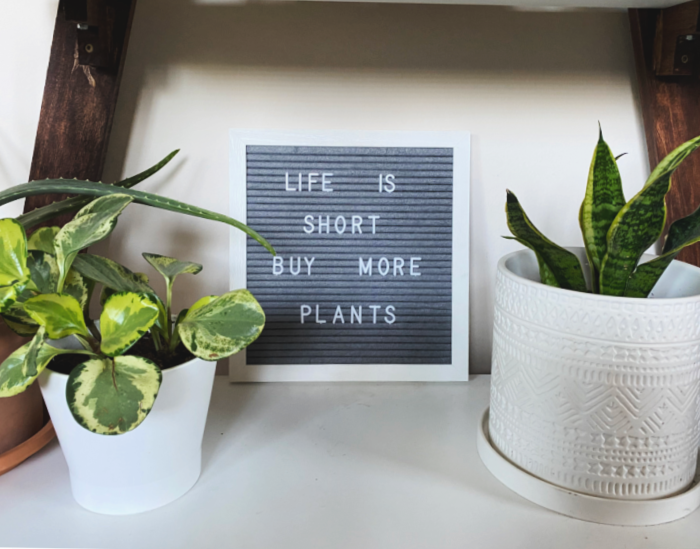If you’re like me, staying at home earlier this year led you to buying several new houseplants. We’re not the only ones. Last winter, I had just one or two plants and the only change I made was to move them away from the window when it got cold. This year, I’m going into winter with a dozen houseplants that all have different needs. I’ve been doing some research and I wanted to share some steps I’m taking to keep everything alive this winter!

Relocate Plants for the Winter
Many people keep houseplants outside during warmer months. This is a great way to ensure plants get adequate sunlight and they enjoy the rain. However, when nightly temperatures drop below 45 degrees Fahrenheit (7 degrees Celsius), it is time to find space inside for all your plants. Keep plants away from drafts, heaters or windows to ensure consistency in temperature. Sadly, the windowsill also won’t cut it in winter, as the glass can become frosty and do more harm than good. Watch your thermostats as drastic changes in temperature can kill a houseplant.
Monitor Light
There is less sunshine in the winter, so your bright light loving plants, like jade plants, string of pearls and aloe vera, may need to be moved around to follow light. Low light plants, like zz plants, snake plants and pothos, will adapt pretty well to shorter days. You should also continue rotating plants throughout winter so they don’t have to reach for the sun. This will ensure even growth. You may also consider a grow light for winter months, which will make up for the lack of natural sunlight.
Reduce Water & Fertilizer
In winter months, you are going to notice less growth and fewer new leaves. Since plants are not growing as much, they don’t need as much food. It is likely that your plants won’t need any fertilizer during winter. As soon as you notice growth in the spring, you can start fertilizing again. Now is also the time to adjust your watering schedule. You should always make sure soil is dry before watering your plants. Poke your finger into the soil and check that it is dry about an inch deep. It may take a little longer to reach that point during colder months.
Monitor Humidity
As soon as the heat kicks on in your home, the air dries out. You know how your skin and hair always seem super dry in the winter? The same thing can happen to your plants. Consider misting plants that enjoy high humidity, like pothos, aloe vera and arrowheads. Mist the soil and base of the plant to keep these plants healthy between watering. Be sure not to leave standing water on leaves, as this can cause rot!
Don’t Repot Plants until Spring
Houseplants are sensitive and they will need to adjust to all of those changes in temperature, humidity and light I mentioned. Repotting and taking cuttings will only upset them more. Spider plants and snake plants are among several plants that actually prefer to be root bound, meaning the roots get dense and take up most of the space in the pot. You should allow plants to rest throughout the winter months and wait to repot when you notice growth in the spring.
What steps are you taking to take care of house plants during the winter?
xo,







Post a Comment